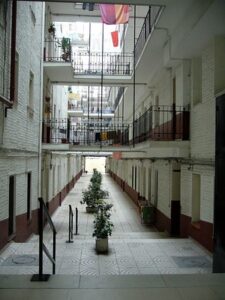A recent report highlights the disconnection between higher education facilities construction and enrollment trends. According to the 7th annual State of the Facilities in Higher Education report, square footage grew between 8.5%-19% (based on institution type) in 2019. Sadly, enrollments have not.
The report raises a stark question. Why are higher education institutions building more buildings when student enrollment does not demonstrate the need for additional space? Worse, the arrival of the COVID-19 pandemic is likely to bring ongoing, severe financial challenges to public and private institutions alike.
This year’s report featured data from more than 300 US educational institutions. Collectively, the campuses in the study have nearly 1.5B square feet of facilities space. About 60% of the institutions in the study receive public funding.
At the same time institutions are rushing to add space, the higher education facilities maintenance backlog (neglect) – has grown by 30%. Additionally, within the next decade, a significant number of aging higher education facilities will require major renovation or rehabilitation. This massive need is likely to hit when student enrollment will be at its lowest point in the decade.
If WCC’s enrollment is such a deep concern, why is the WCC Board of Trustees authorizing any new construction? Why build more buildings when the existing buildings are practically falling down? A 2017 Forbes article offers one suggestion: the unrestricted growth of administration in higher education correlates closely with expensive (and unneeded) building sprees. The unnecessary construction also raises the cost of education (i.e. student loan debt) for the students.
Higher education will look very different in the near and foreseeable future. Taxpayers need Trustees who will examine every capital and personnel-related spending request by the administration critically.
Dear Trustees, it is time to put away the rubber stamp.
Photo Credit: Mike , via Flickr






















